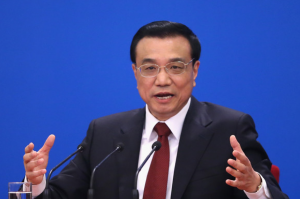
In continued efforts to liberalize its economy, China is beginning the process of removing the need for preconditioned government approval for offshore corporate bonds. This will help Chinese firms with excess production or reserves to do business over seas. Coupled with the recent pushes for the AIIB, China is clearly looking to expand its already large influence on the global market.
Under current laws, Chinese companies must obtain government approval for overseas sales, even if an agreement has been made between the two involved parties. Some of the targeted sectors for increased export were Chinese steel, cement, and railroad construction. Premier Li Keqiang phrased it as China exporting industrial capacity. By doing so, China can more evenly restructure its economy in the face of the quickening slowdown. Many of China’s recent actions to combat the slowdown seem to be longer-term investments, potentially aimed at leveling out the rate of decline while suffering short-term losses, so to speak.
However, the relaxation of regulation on export is seen by some as a further reduction of government protection of Chinese industries. Yet on the whole China’s export of capital is a beneficial trend both for China and the foreign markets it enters. 2014 marked the first time that Chinese foreign investment exceeded foreign direct investment in China. The timing is also perfect, seeing as the two top railroad companies in China saw record profits and thus now have the capacity to export their services, potentially to Africa where infrastructure improvements are desperately needed. An economist from the party School of the CPC Central Committee said that these new export reforms are directly in line with the more domestic oriented belt and road initiatives.
China is smartly continuing to open up to the rest of the world, thus both attracting FDI but also increasing Chinese influence around the world. But with most of the developed world not in need of the capacities China is offering, many of the Chinese investments will have to come from the developing world, which is a far riskier undertaking. Will building ‘bridges’ with countless partners inevitably lead wasteful ‘bridges’ to nowhere? Regardless, at the current time, opening its doors to the world and economic liberalization is the current path that China has taken.
Source: http://europe.chinadaily.com.cn/business/2015-04/04/content_19999174.htm
Relaxing regulations on exports could potentially increase China’s GDP growth by increasing the net exports component of the GDP model.
This policy can also contribute to solve the problem of overcapacity in China.
Changing capital controls will have no immediate impact on physical capital and hence may not help excess capacity. However, changing capital controls is a necessary prelude to moving to a floating exchange rate. So this is an important news item.
Now what happens when controls are removed? At present Chinese firms do not have diversified assets; buying foreign stocks and bonds will change that. So the diversification incentive will exert major pressure on the RMB, as the demand for dollars will rise, that is, the RMB will depreciate. That will bring howls of protest in the halls of the US Congress, ironic in that most have been proponents of such liberalization of Chinese capital controls.
China seems to be on the process of becoming a net exporter of capital. In 2012, China became one of the three largest investors in the world. It is only a matter of time before its investment in foreign countries exceeds the amount of foreign investment entering the nation.
The Economist points out that in the future, GDP might not be a sufficient indicator to reflect national wealth. Instead, GNP, which is a combination of the values of products and services produced by all citizens within and beyond the borders of a country, will become a new yardstick to measure the creation of Chinese national wealth.